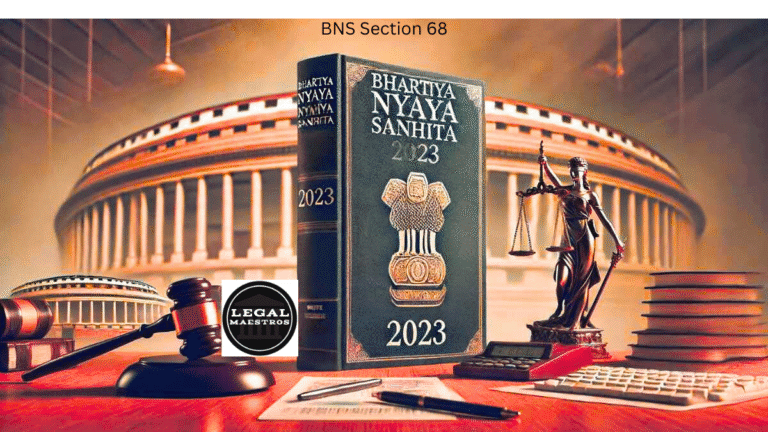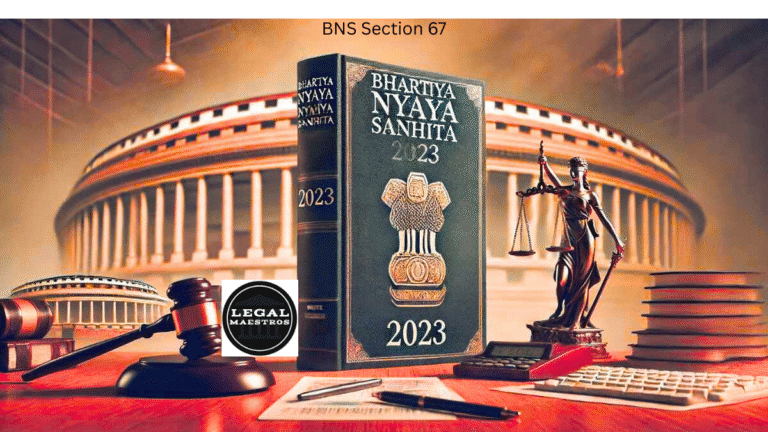
Self-Defence and Innocent Bystanders: What the Law Says under Section 44 of BNS 2023"
Introduction
The Indian Penal Code has been superseded by the 2023 version of the Bharatiya Nyaya Sanhita (BNS), which is the revised version of the criminal law code. What happens when a person is attempting to defend their own life (the right of private defense), but there is a chance that innocent individuals around might get wounded during the defense? This is a sensitive and uncommon circumstance that is addressed in Section 44 of the BNS. In this part, it is made abundantly clear that the right to self-defense is still applicable, even in situations where the defender has no choice but to act in a manner that may accidentally cause injury to other people.
An Explanation of the Law in Ordinary Language
In the event that an individual is being assaulted in a manner that has the potential to result in death, and they take action to protect themselves, they are legally permitted to do so, even if those actions may inadvertently cause harm to an innocent person who is in close proximity. The legal system is aware of the fact that there are certain circumstances in which it is impossible to defend oneself without putting another person from harm’s way. In situations like these, the person who is protecting themselves will not be held responsible for causing harm to the innocent person, provided that the harm was not deliberately caused and that there was no alternative safer means to leave or defend themselves.
An Illustration to Further Clarify the Concept
For example, a person with the name A is subjected to an assault by a violent mob that is attempting to kill him. A can only protect himself by firing a gun at the crowd, which is the only feasible option. However, there are a few young toddlers scattered throughout the gathering. If A shoots himself in an attempt to save himself and inadvertently causes injury or death to one of the children, he will not be punished for his actions. The reason for this is that he had no other choice but to do this action in order to save his own life, and he did not want to cause any harm to the children.
For any queries or to publish an article or post or advertisement on our platform, do call at +91 6377460764 or email us at contact@legalmaestros.com.
For More Updates & Regular Notes Join Our Whats App Group (https://chat.whatsapp.com/DkucckgAEJbCtXwXr2yIt0) and Telegram Group ( https://t.me/legalmaestroeducators )
The Reasons Why This Provision Is Really Important
People who are in potentially life-threatening situations are afforded specific protection by this provision. During times of crisis, it is not always feasible to arrive at a decision that is completely satisfactory. The legal system recognizes that it is unreasonable to anticipate that an individual will give up their own life in order to protect others from all and all potential dangers, particularly in situations where the threat is sudden, severe, and inescapable.
However, this does not imply that individuals are free to behave irresponsibly or use force without constraint. Any harm that is inflicted upon innocent people must be completely unintentional and unavoidable. Despite this, the use of force must still be justified and essential for the purpose of defense.
For any queries or to publish an article or post or advertisement on our platform, do call at +91 6377460764 or email us at contact@legalmaestros.com.
Relating to the Laws That Came Before
There is a striking resemblance between Section 44 of the BNS and the previous Section 106 of the Indian Penal Code, which similarly permitted self-defense even in situations when there was a risk to onlookers. Although the new law adheres to the same idea, it has been updated to conform to the contemporary framework of criminal law.
Chapter 44 of the Bharatiya Nyaya Sanhita, which was published in 2023, acknowledges the fact that there are some life-threatening circumstances that do not allow for ideal decisions to be made. People who defend themselves with the required force are protected by this law, even if the defense mistakenly causes harm to someone who is not responsible for the harm. The most important requirement is that the injury must not have been done intentionally, and the individual must have been in reality unable to find a more secure means of protecting themselves. In times of extreme crisis, this law achieves a compromise between the obligation to defend oneself and the obligation to act morally responsible.
For any queries or to publish an article or post or advertisement on our platform, do call at +91 6377460764 or email us at contact@legalmaestros.com.





![Research Assistantship @ Sahibnoor Singh Sindhu, [Remote; Stipend of Rs. 7.5k; Dec 2025 & Jan 2026]: Apply by Nov 14, 2025!](https://legalmaestros.com/wp-content/uploads/2025/11/Gemini_Generated_Image_s0k4u6s0k4u6s0k4-768x707.png)
![Karanjawala & Co Hiring Freshers for Legal Counsel [Immediate Joining; Full Time Position in Delhi]: Apply Now!](https://legalmaestros.com/wp-content/uploads/2025/11/Gemini_Generated_Image_52f8mg52f8mg52f8-768x711.png)
![Part-Time Legal Associate / Legal Intern @ Juris at Work [Remote]: Apply Now!](https://legalmaestros.com/wp-content/uploads/2025/11/ChatGPT-Image-Nov-12-2025-08_08_41-PM-768x768.png)
![JOB POST: Legal Content Manager at Lawctopus [3-7 Years PQE; Salary Upto Rs. 70k; Remote]: Rolling Applications!](https://legalmaestros.com/wp-content/uploads/2025/11/ChatGPT-Image-Nov-12-2025-08_01_56-PM-768x768.png)